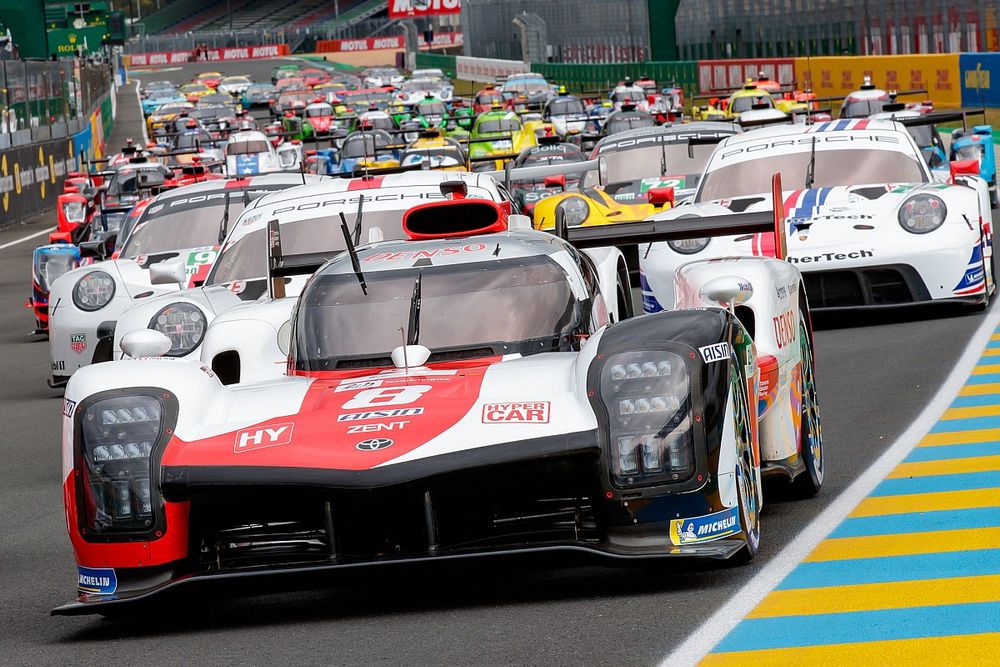amicitaacademy.com – The 24 Hours of Le Mans, known in French as Les 24 Heures du Mans, stands as one of the most iconic and challenging motorsport events in the world. Held annually in the town of Le Mans, France, this race has been a pinnacle of endurance racing since its inception in 1923. Over its century-long history, it has not only showcased automotive excellence but also pushed the boundaries of technology, teamwork, and human perseverance.
The Origins of Le Mans
The 24 Hours of Le Mans was created by the Automobile Club de l’Ouest (ACO) to promote automotive innovation and reliability. Unlike conventional races focused on speed, Le Mans emphasized endurance, requiring cars to run continuously for 24 hours on a mix of public roads and racetrack sections, now known as the Circuit de la Sarthe. This unique format demanded vehicles that could balance speed with durability.
The Race Format
The Le Mans race tests the limits of drivers, teams, and cars over a grueling 24-hour period. Teams typically consist of three drivers who alternate stints, managing fatigue, fluctuating weather conditions, and the challenges of nighttime driving. The winner is determined by the car that covers the greatest distance within the time frame.
Classes and Categories
Le Mans features multiple classes of cars competing simultaneously, ranging from cutting-edge prototypes in the Hypercar category to production-based GT cars. This multi-class structure creates dynamic on-track battles and adds layers of strategy, as faster cars navigate through slower traffic.
Technological Innovations
Le Mans has been a breeding ground for automotive innovation. Many technologies developed for the race have found their way into everyday vehicles. These include advancements in aerodynamics, fuel efficiency, hybrid powertrains, and braking systems. Notable innovations include:
- The introduction of disc brakes by Jaguar in the 1950s.
- Audi’s pioneering use of diesel engines and hybrid technology in the 2000s.
- Toyota’s dominance with hydrogen and hybrid-powered vehicles in recent years.
Memorable Moments
The history of Le Mans is rich with legendary moments:
- In 1955, the race was marred by a tragic accident that led to sweeping safety reforms in motorsport.
- Ford’s dramatic victory in 1966, famously depicted in the film Ford v Ferrari.
- Porsche’s unparalleled dominance, with 19 overall wins as of 2023.
The Human Element
Behind the machinery, Le Mans is a story of human endeavor. Drivers face physical and mental exhaustion, pushing their limits to deliver peak performance. Teams operate like finely tuned machines, executing pit stops, repairs, and strategy with precision. The camaraderie and resilience displayed at Le Mans make it a celebration of the human spirit.
The Future of Le Mans
As the automotive world shifts toward sustainability, Le Mans continues to lead the way. The introduction of hydrogen-powered vehicles and the emphasis on hybrid technology reflect its commitment to green innovation. The race remains a testing ground for the next generation of mobility.
Conclusion
The 24 Hours of Le Mans is more than just a race; it’s a symbol of what’s possible when passion, innovation, and perseverance come together. With its storied past and forward-looking vision, Le Mans remains a cornerstone of motorsport and a beacon for the future of automotive excellence.






